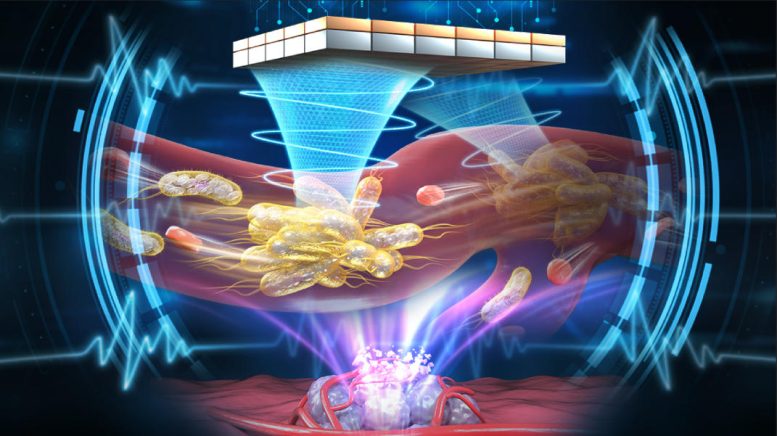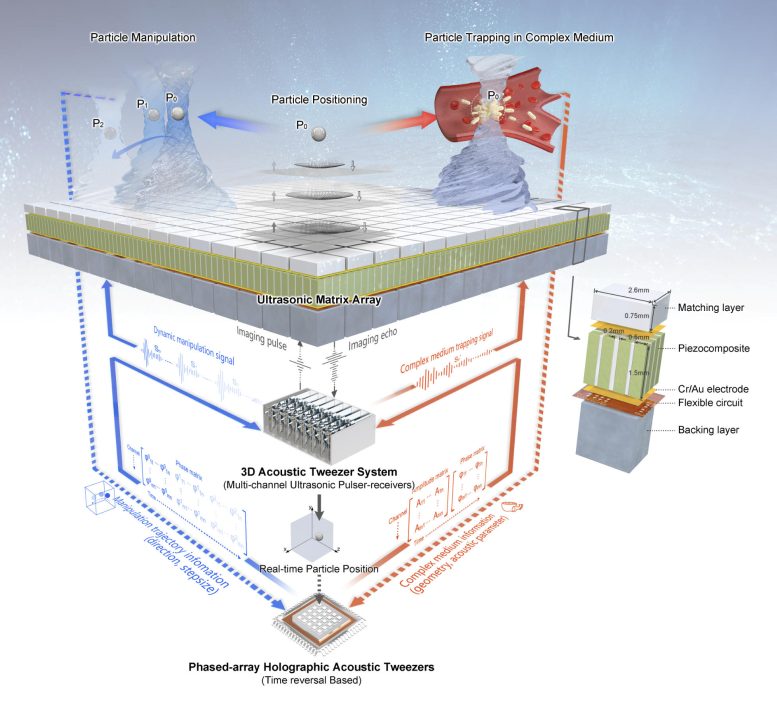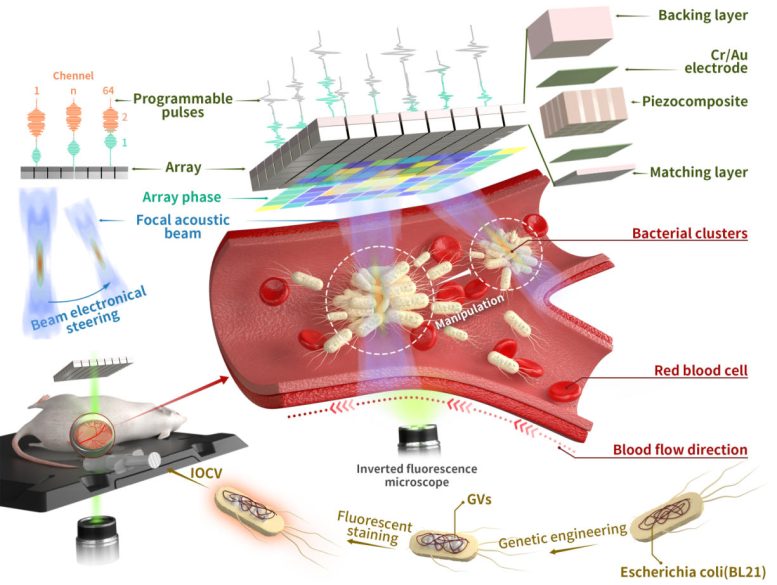Schematic diagram of in vivo manipulation of cells using PAHAT. Credit: SIAT
Acoustic tweezers manipulate the movement of target objects through the momentum exchange between the acoustic wave and the object. Their ability to penetrate tissue deeply and produce a powerful acoustic radiation force lets them outperform optical and magnetic tweezers, making them ideal for in-vivo cell manipulation.
A research team led by Prof. Zheng Hairong from the Shenzhen Institute of Advanced Technology (SIAT) of the Chinese Academy of Sciences (CAS) has recently developed a new type of acoustic tweezers—the phased-array holographic acoustic tweezers (PAHAT) system—which is based on a high-density planar array transducer capable of generating tunable three-dimensional bulk acoustic waves. The researchers hope this system can realize a pharmacological version of “telekinesis.”
The study was recently published in the journal Nature Communications.
Schematic diagram of phased-array holographic acoustic tweezers (PAHAT) system. Credit: SIAT
The in vivo environment is extremely complex, due to the different characteristics of various tissues, organs, bones, blood vessels, and blood flow. Such a complex environment creates a huge challenge: How can acoustic methods be used to “trap” bacteria so they can produce therapeutic effects on tumors?
The team investigated dynamic target manipulation in complex environments using holographic acoustic fields. They subsequently developed a high-density ultrasound transducer array, which made it possible to generate a strong gradient acoustic field and exert precise spatiotemporal control.
Setup diagram for in vivo manipulation of cells using PAHAT. Credit: SIAT
The researchers then used gene editing to create sub-micrometer gas vesicles in bacterial cells, enhancing their acoustic sensitivity. These genetically engineered bacteria formed clusters under the influence of the radiation force in the acoustic field. By combining microscopic imaging with PAHAT, the researchers were able to achieve precise manipulation of bacterial clusters in live mice, thus demonstrating a promising approach for targeted drug delivery and cellular therapy in cancer treatment.
Prof. Ma Teng, co-corresponding author of the study, said that the researchers could “precisely control bacteria to reach the lesion according to the predetermined path,” while Prof. Yan Fei, co-corresponding author of the study, said that the manipulation technology improved cluster aggregation within tumors, thus effectively slowing tumor growth.
According to Prof. Zheng, “PAHAT enables precise non-contact manipulation of cells in living organisms. Combining with functional cells and cell spheroids, it has great potential in immunotherapy, tissue engineering, targeted drug delivery, and other fields.”
Reference: “In-vivo programmable acoustic manipulation of genetically engineered bacteria” by Ye Yang, Yaozhang Yang, Dingyuan Liu, Yuanyuan Wang, Minqiao Lu, Qi Zhang, Jiqing Huang, Yongchuan Li, Teng Ma, Fei Yan and Hairong Zheng, 6 June 2023, Nature Communications.
DOI: 10.1038/s41467-023-38814-w
>>> Read full article>>>
Copyright for syndicated content belongs to the linked Source : SciTechDaily – https://scitechdaily.com/telekinesis-scientists-develop-new-technology-for-targeted-cancer-therapy/


































